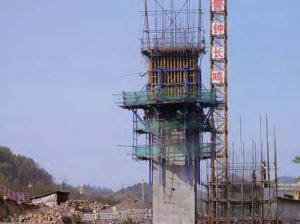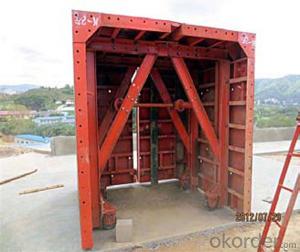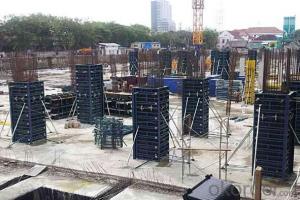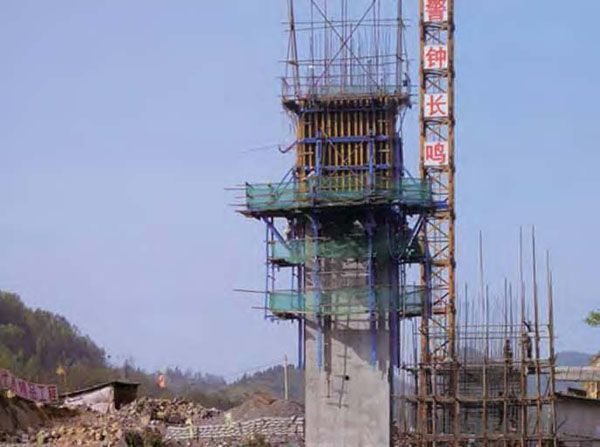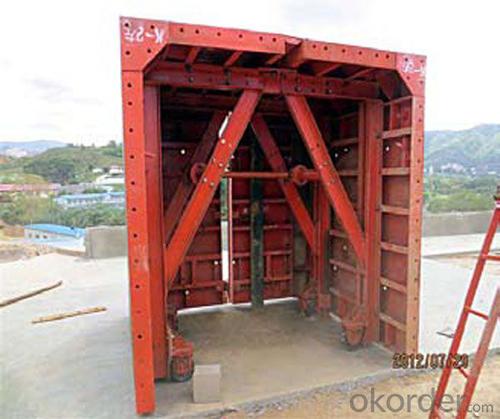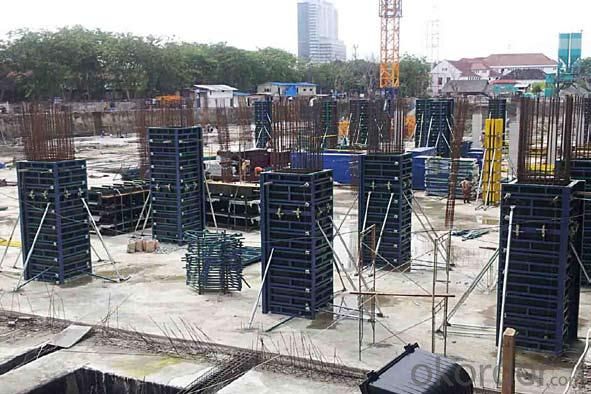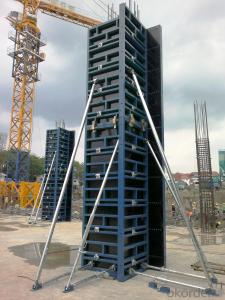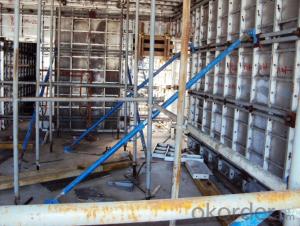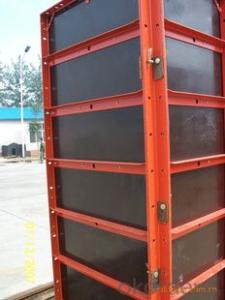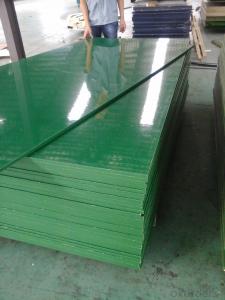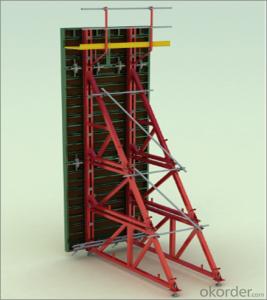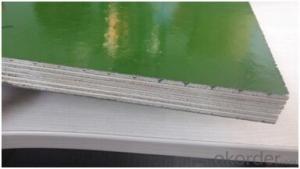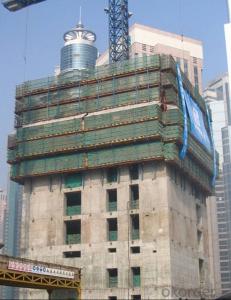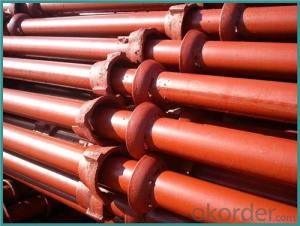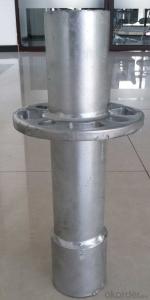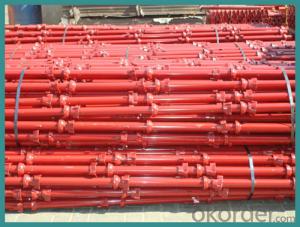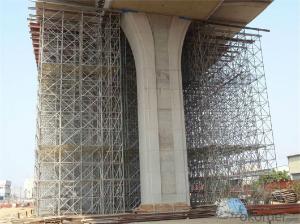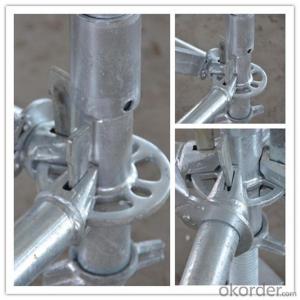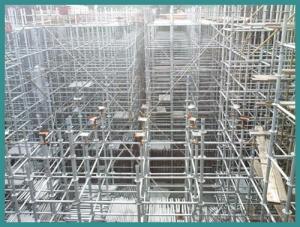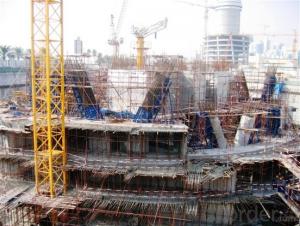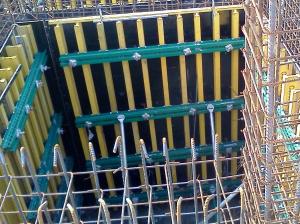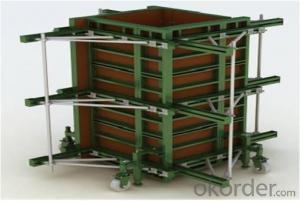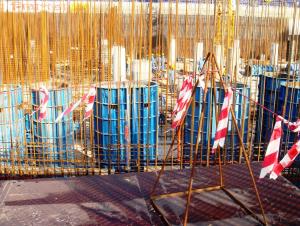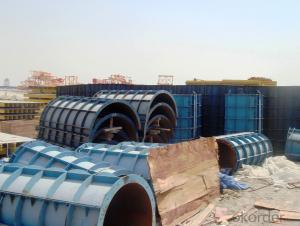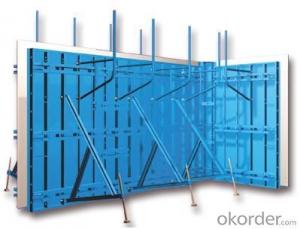Steel Formwork Scaffolding System Steel Props with high quality
- Loading Port:
- Tianjin
- Payment Terms:
- TT OR LC
- Min Order Qty:
- 27 m.t
- Supply Capability:
- 1000 m.t/month
OKorder Service Pledge
OKorder Financial Service
You Might Also Like
Steel Formwork Scaffolding System Steel Props with high quality
Product pictures:
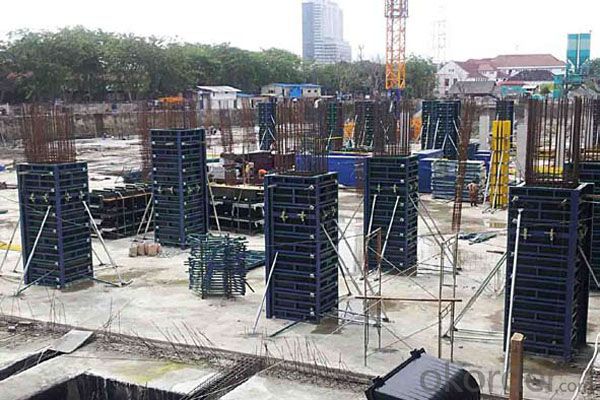
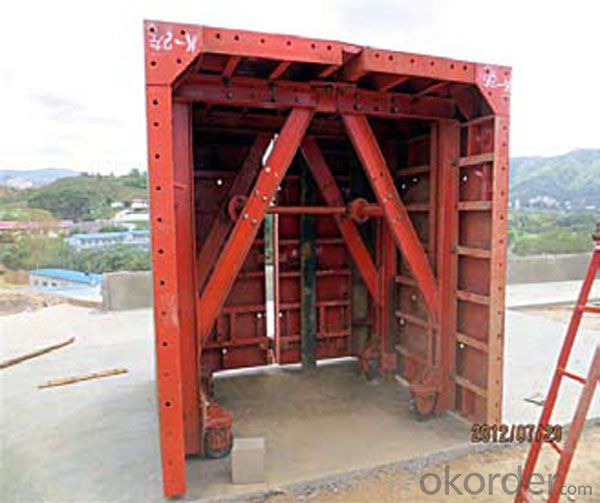
Product description:
Name: | RingLock Scaffold System |
Category: | Scaffolding System |
Material: | Steel (Q235/Q345) |
Size: | D48*3.25mm, etc |
Surface: | Electro Galvanized, Hot Dipped Galvanized, Painted, Powder Coated |
Component: | Standard, Ledger, Diagonal Brace, Bracket, Base Jack, U Head Jack, Etc. |
Application: | Slab Support, Staircase, Stage Plateforms, Bridge Support, Mobile Tower, etc. |
Manufacturer: | OEM is Available |
Items or goods can be manufactured according to your standards. | |
Advantage
* Good loading capacity
* Easy to assemble and dismantle
* Excellent quality for formwork & scaffolding with wide choices
Other scaffolding & formwork products:
(1) Scaffolding System:
(2) Scaffolding Frame & Accessories:
(3) Scaffolding Couplers/Clamps:
(4) Formwork System Scaffolding & Accessories:
Company introduce and advantages:
1. A state-owned company, prestige fi rst.
2. One of Fortune 500 companies in the world. No. 5 in the building material fi eld.
3. Six Sigma strategy , which means no more than 3.4 defects existing among one million of error
possibilities.
4. In line with the business, we launched E-business platform Okorder.com.
5. We are highly recognized by our business partners and clients all over the world and has obtained rapid
development under the spirit of win-win.
FAQ
Why Us?
We are one of the largest construction materials suppliers in China.
We own professional manufacturers with powerful producing capacity.
Extensive and comprehensive quality control system
Excellent products with competitive prices.
Efficient services in pre and after sale.
Full energy with affluent experience team.
- Q: How does steel frame formwork accommodate for different concrete reinforcement configurations?
- The versatility of the steel frame formwork system lies in its ability to easily adapt to various concrete reinforcement configurations. This is made possible through the incorporation of adjustable features and components. To begin with, the steel frames utilized in the formwork consist of modular panels that can be effortlessly assembled and disassembled. These panels possess the capability to be modified in terms of size and shape, thereby providing flexibility in accommodating different reinforcement configurations. The connection of these panels can be achieved using a variety of clamps or connectors, allowing for customization to match the specific reinforcement layout. Furthermore, the steel frames are equipped with adjustable struts or props that serve to support and stabilize the formwork. These struts can be conveniently extended or retracted to correspond with the height and depth of the reinforcement bars or mesh. This adaptability enables the formwork to be adjusted to the necessary dimensions, ensuring proper coverage and alignment of the reinforcement. In addition, the steel frames can incorporate adjustable brackets or holders that can be positioned at various points along the frame. These brackets serve the purpose of securing the reinforcement bars or mesh in place, preventing any displacement during the pouring of the concrete. The adjustability of these brackets allows for different reinforcement configurations, including varying bar sizes or spacing, to be accommodated. Overall, the steel frame formwork system offers exceptional adaptability to diverse concrete reinforcement configurations. Its modular design, adjustable panels, struts, and brackets enable it to be easily customized and tailored to suit the specific requirements of each project. This guarantees the proper reinforcement of the concrete structure, ensuring compliance with the specified design criteria.
- Q: How does steel frame formwork handle different types of formwork scaffolding?
- A versatile and efficient system for handling various types of formwork scaffolding effectively is the steel frame formwork. This formwork system consists of robust steel panels that are interconnected to create a sturdy structure. These panels provide the necessary support and structure for the concrete during the casting process. Steel frame formwork can easily accommodate different types of formwork scaffolding. Whether it is traditional scaffolding, modular scaffolding, or any other type, the steel frame formwork can be easily integrated and secured to provide a stable and safe working platform. One of the main advantages of steel frame formwork is its adaptability. The steel panels can be easily adjusted and interconnected to meet the specific requirements of different formwork scaffolding systems. This flexibility allows for efficient and precise construction, as the formwork can be easily modified or reconfigured as needed. Furthermore, steel frame formwork offers excellent load-bearing capacity, ensuring the safety of workers and materials. The steel panels are designed to withstand heavy loads, making them suitable for supporting various scaffolding systems and providing a secure platform for workers to operate. Moreover, steel frame formwork is highly durable and long-lasting. The steel construction ensures that the formwork can withstand harsh weather conditions and repeated use without compromising its structural integrity. This durability makes it an ideal choice for different types of formwork scaffolding, as it can handle the wear and tear associated with scaffolding systems. In conclusion, steel frame formwork is a reliable and efficient solution for handling different types of formwork scaffolding. Its adaptability, load-bearing capacity, and durability make it an excellent choice for creating a safe and stable working platform for construction projects.
- Q: Are there any environmental concerns associated with steel frame formwork?
- There are indeed some environmental concerns linked to steel frame formwork. Firstly, the production of steel requires a significant amount of energy and results in the emission of greenhouse gases, which contribute to climate change. The extraction and processing of raw materials for steel production also have detrimental effects on the environment, such as deforestation and the destruction of habitats. Moreover, steel frame formwork is often used only once for a specific construction project and then discarded, leading to a significant amount of waste generation and contributing to pollution in landfills. On the other hand, reusable formwork systems made from sustainable materials like bamboo or recycled plastic can help reduce waste and minimize environmental impacts. Furthermore, the transportation of steel formwork to construction sites requires fuel consumption and results in transportation emissions, which can further contribute to air pollution and carbon emissions. However, it is worth noting that steel formwork also has its advantages. It is durable, strong, and easy to assemble and disassemble, making it popular in the construction industry. Additionally, steel can be recycled, which helps reduce the environmental impact of its disposal. To address the environmental concerns associated with steel frame formwork, it is crucial to focus on improving the overall sustainability of construction practices. This can involve using more eco-friendly alternatives, implementing efficient waste management strategies, promoting recycling, and adopting sustainable transportation methods. Additionally, incorporating renewable energy sources into steel production can help reduce its carbon footprint.
- Q: How does steel frame formwork handle the placement of landscaping and outdoor features within the concrete structure?
- Steel frame formwork is a versatile system that can easily accommodate the placement of landscaping and outdoor features within the concrete structure. With its flexible design and adjustable panels, the formwork can be customized to create openings or voids for trees, plants, or other elements to be integrated seamlessly. Additionally, the steel frame provides excellent support and stability, ensuring that the landscaping and outdoor features are securely embedded in the concrete structure.
- Q: What are the factors that determine the design of steel frame formwork?
- There are several factors that determine the design of steel frame formwork. Firstly, the type and size of the structure being constructed play a crucial role in determining the design of steel frame formwork. Different types of structures, such as high-rise buildings, bridges, or industrial facilities, have varying requirements in terms of load-bearing capacity, shape, and dimensions. The design of the steel frame formwork must be able to accommodate these specific requirements. Secondly, the expected concrete pressure exerted on the formwork is another important factor. The concrete pressure is influenced by factors such as the height of the structure, the type of concrete mix used, and the rate of concrete pouring. The design of the steel frame formwork should be able to withstand the anticipated concrete pressure without deforming or collapsing. Thirdly, the construction schedule and project timeline also impact the design of steel frame formwork. If the construction requires a fast-paced schedule with quick turnaround times, the formwork design should facilitate easy assembly, disassembly, and reusability. On the other hand, if the project timeline allows for longer construction periods, the design can prioritize durability and longevity. Furthermore, considerations such as budget, availability of materials, and construction site conditions also influence the design of steel frame formwork. The design should be cost-effective, utilizing materials that are readily available and suitable for the construction site environment. Additionally, factors like weather conditions, topography, and site accessibility may affect the design by requiring additional reinforcements or modifications to ensure stability and safety. Lastly, compliance with local building codes, regulations, and safety standards is a crucial factor in the design of steel frame formwork. The formwork design should adhere to these guidelines to ensure the structural integrity of the construction and the safety of workers. In summary, the design of steel frame formwork is determined by various factors including the type and size of the structure, expected concrete pressure, construction schedule, budget, availability of materials, construction site conditions, and compliance with building codes and safety standards. A comprehensive understanding of these factors is essential for designing a formwork system that meets the specific requirements of a construction project.
- Q: Can steel frame formwork be used for circular columns?
- Yes, steel frame formwork can be used for circular columns. Steel frame formwork is versatile and can be easily adjusted to form different shapes and sizes, including circular columns. The adjustable nature of steel frame formwork allows for flexibility and customization to meet specific project requirements. By using adjustable steel frames, the formwork can be shaped to create a circular mold for pouring concrete and forming circular columns. This makes steel frame formwork a suitable choice for construction projects that involve circular column structures.
- Q: Steel frame wood template defects
- And out of the wall also need high cost in the batch. Turnover number is not much
- Q: Can steel frame formwork be used for concrete beams?
- Yes, steel frame formwork can be used for concrete beams. Steel frame formwork provides a strong and durable support structure for pouring and curing concrete beams, ensuring accuracy and stability during the construction process.
- Q: How does steel frame formwork compare to plastic formwork?
- Steel frame formwork and plastic formwork each have their own advantages and disadvantages, and the choice between the two primarily depends on the specific requirements of the construction project. Steel frame formwork is known for its durability and strength. It can withstand heavy loads and is capable of being reused multiple times, making it a cost-effective option for projects that require repeated use of the formwork. Steel frame formwork is also highly versatile, as it can be easily adjusted and customized to fit different shapes and sizes. Additionally, steel frame formwork provides excellent stability and support, ensuring precise and accurate concrete placement. On the other hand, plastic formwork offers its own set of advantages. It is lightweight and easy to handle, making it ideal for projects that require frequent transportation and assembly. Plastic formwork is also resistant to corrosion and does not require any special maintenance, resulting in reduced costs over time. Furthermore, plastic formwork offers good insulation properties, which can be beneficial in certain construction projects. Despite these advantages, plastic formwork may not be suitable for all construction projects. It may not be able to withstand heavy loads as effectively as steel frame formwork, and it may not be as durable or long-lasting. Additionally, plastic formwork may have limitations in terms of customization and adjustability, as it may not be as easily modified to fit complex shapes and sizes. In summary, the choice between steel frame formwork and plastic formwork depends on various factors such as the project requirements, budget, and specific conditions. Steel frame formwork is a reliable and durable option that offers versatility and stability, whereas plastic formwork provides advantages in terms of lightweight, ease of handling, and cost-effectiveness. Ultimately, it is important to assess the needs of the project and consult with construction professionals to determine the most suitable formwork solution.
- Q: How does steel frame formwork contribute to better concrete compaction in congested areas?
- Steel frame formwork contributes to better concrete compaction in congested areas by providing a rigid structure that holds the concrete in place during the pouring and curing process. This formwork system allows for precise placement of the concrete, ensuring that it is evenly distributed and compacted without any gaps or voids. Additionally, the steel frame formwork allows for easy access to the concrete for vibrators and other compaction equipment, enabling efficient compaction even in tight spaces. Overall, the use of steel frame formwork promotes better concrete compaction in congested areas, resulting in a higher quality and more durable concrete structure.
Send your message to us
Steel Formwork Scaffolding System Steel Props with high quality
- Loading Port:
- Tianjin
- Payment Terms:
- TT OR LC
- Min Order Qty:
- 27 m.t
- Supply Capability:
- 1000 m.t/month
OKorder Service Pledge
OKorder Financial Service
Similar products
Hot products
Hot Searches
Related keywords
